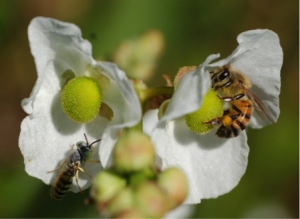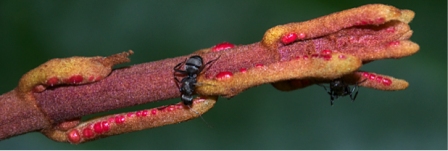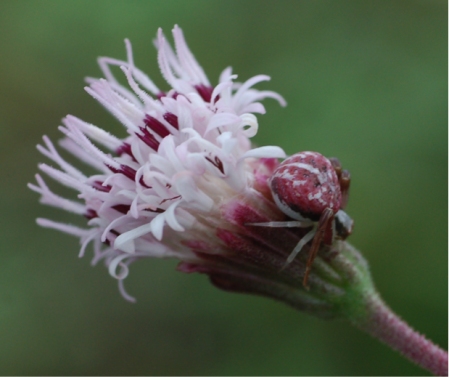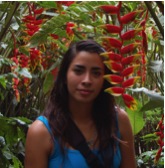 The Association for Tropical Biology and Conservation presents the Alwyn Gentry Award for the Best Student Papers each year at its Annual Meeting.
The Association for Tropical Biology and Conservation presents the Alwyn Gentry Award for the Best Student Papers each year at its Annual Meeting.
In 2013, the Alwyn Gentry Award for the best student oral presentation was given to Ms. Dulce Rodríguez-Morales from the Instituto de Ecología A. C., Carretera antigua a Coatepec 351, El Haya, Xalapa 91070, Veracruz, México.
Florivory on the floral buds and its effect on floral display in Chamaecrista chamaecristoides in a Mexican dune system
Dulce Rodríguez-Morales, Armando Aguirre-Jaimes, José G. García-Franco
Contact : dulce.rodriguez.morales89@gmail.com
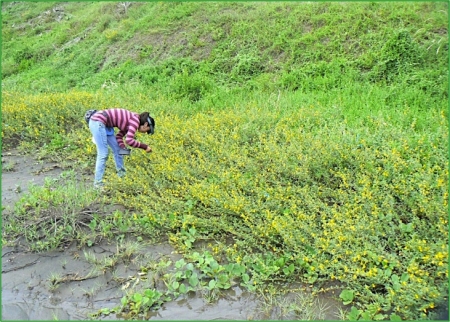
Chamaecrista chamaecristoides plants with yellow flowers in La Mancha, Veracruz. (© J. García-Franco)
Abstract. Florivory has a direct effect on plant reproduction by reducing the frequency of visitors and the number of available flowers. This effect can be greater on plants with sexual dimorphism (i.e.dioecious, monoecious, enantiostily). Chamaecrista chamaecristoides is a pioneer plant from dune ecosystems that has flowers with enantiostily.Flowering is short (15 days) and flowers live for one day. Plants produce a lot of buttons; many of them are damaged partially or totally by herbivores,affecting the floral display and the number of flowers available. Wasps are also a source of damage when they pierce flower buds to extract weevil larvae found inside. We evaluated the damage caused by the wasp and weevil larvae on the flowering of C. chamaecristoides. The hypothesis is that a large number of buttons are damaged this way damaged and this has a negative effecton the number of flowers. During the flowering season (August 2012), was quantified the number of buttons in five categories of damage, distributed in 10 patches located along the beach at Biological Station in La Mancha. Result show that almost half of the buttons have some level of florivory (56% intact, 44% damaged). The chopped damage category was the most frequent (54%), followed by staining category (24%), suggesting tissue oviposition and suction by weevil. The categories hole, cut and dry buttons (4%, 8% and 10%, respectively) indicate the emergence of adult insects of Curculionidae. In general, intact flowers were more numerous than the damaged (75% and 25%, respectively), however, the proportion was similar for floral morph (left: intact 37%, 13% damaged: right: intact 38%, damaged 12%). In conclusion, florivory in C. chamaecristoides reduces the number of flowers available during the flowering period, however, does not changeout crosing opportunities due the proportion of 1:1 is maintained floral morphs. PDF
More about Dulce Rodriguez-Morales´s study
I am very interested in the biotic interactions, in this regard have been conducting research in the Mexican tropics. One of the sites where work is La Mancha Veracruz on the Gulf of Mexico. In this place, in the wetland area, assess how the florivory affects the floral visitors and reproductive success of lancifolia (Alismataceae). The findings of this research suggest that there is a negative effect on the frequency of flower visitors, by modifying the original morphology of the flowers, with negative consequences on the reproductive success (fruit set and seed set). In this same place, but in the coastal dunes, in collaboration with José García-Franco and Armando Aguirre, both researchers at the Instituto de Ecología A. C., develop the project in which we evaluate the florivory in Chamaecrista chamecristoides.
Another site where I work is in the tropical rain forest of Los Tuxtlas, Veracruz, studying the relationship between plants and ants, in this project, we describe the morphology and anatomy of extrafloral nectaries of more than 60 species of plants, this project also includes the construction of complex networks between plants and ants species associated with these. This project is in collaboration with Armando Aguirre, Guillermo Angeles (Institute of Ecology A. C.) and Rosamond Coates (IB-UNAM).
I am currently in the Master Program in the Universidad Veracruzana (Instituto de Neuroetología). I will develop a related research about of the prey behavior of spiders (Thomisidae) that mimic the colors of the flowers, and their effect on the reproductive success in three plant species in La Mancha. This project is supervised by Victor Rico-Gray (Universidad Veracruzana) and José García-Franco, in collaboration with William Eberhard (Universidad de Costa Rica).




